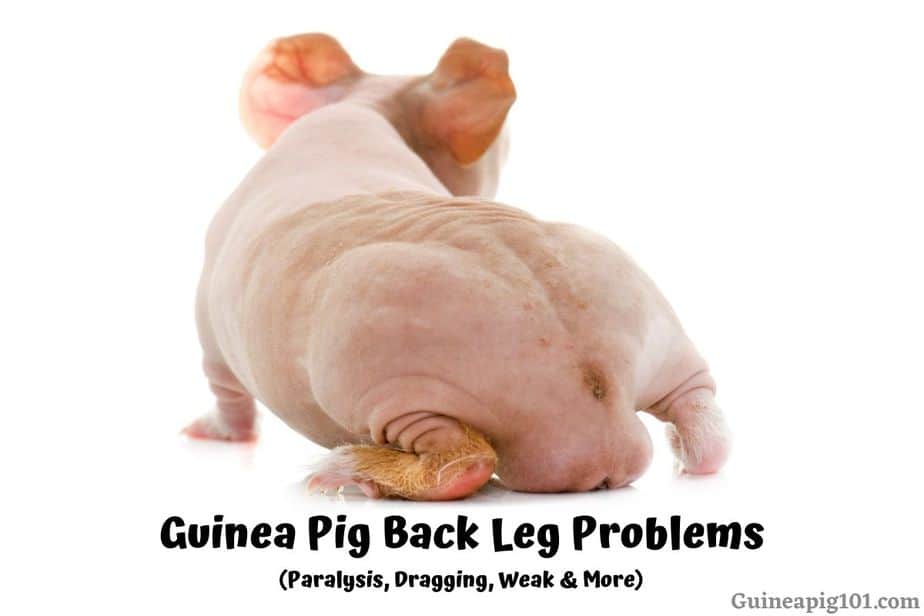Guinea pig back leg problems are prevalent. Every guinea pig will face this problem once in a lifetime. It happens when guinea pigs grow older. Illness and distressing injury can also soar these issues. The wear and tear of muscles and bones are not the only concern. If not treated well, it can lead to paralysis.
A common reason for back leg weakness in guinea pigs is the joint problem. Make sure that your guinea pig’s leg is not wrenched or fractured. Spinal problems, such as distended discs or dislocated bones, are also a significant risk. Regular vet checkups can prevent such problems.
A guinea pig that is not able to use its hind legs needs regular support.
The loss of back legs will have a disastrous impact on your guinea pig. It can also affect their health.
This guide will go through various potential explanations for loss of mobility in your guinea pigs.
Please note that we are not medical experts. We have created this guide for educating our readers. For any medical emergency, you should consult a professional veterinarian immediately.
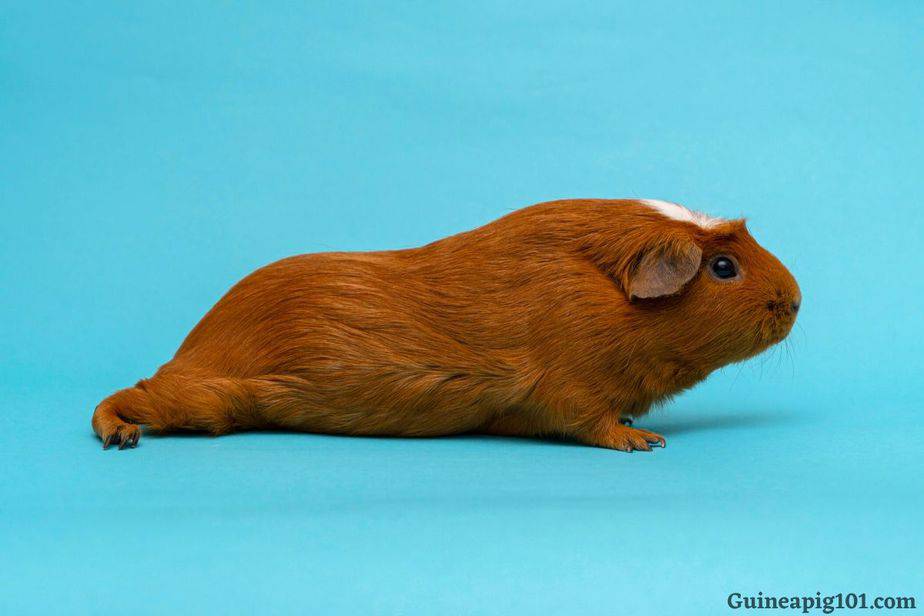
How does a guinea pig use their hind legs?
Hind legs are the most important part of guinea pig’s anatomy. Guinea pigs use their hind legs to perform a variety of day-to-day activities in their daily life. Back legs are the guinea pig’s most essential mode of movement.
Hind legs of guinea pigs help them to move at speed. That is the most significant part of the wild guinea pig’s life.
Wild guinea pigs face their predators in their everyday life. They have to flee fast, and without hind legs, guinea pigs have to struggle a lot for moving at speed.
Guinea pigs also use their hind legs to stand in search of predators or for begging. Naturally, hind legs must support the bodyweight of the guinea pig.
Guinea pigs also use their hind legs to groom themselves. They use their hind legs to get relieved from itching and smooth over their messed-up fur.
Guinea pig hind legs anatomy
A guinea pig’s hind legs are divided into three essential parts.
- The foot.
- The leg.
- The thigh
Guinea pigs thighs
Thighs are the most critical part of the guinea pig’s body as it holds the muscles needed for movement. Their thigh muscles contain much power to help guinea pig accelerate their speed.
Guinea pigs feet
Guinea pig uses its feet to walk. They have 3 toes in their hind feet.
Guinea pigs legs
Legs are situated beneath the thigh and up above the foot. The bones within them are brittle.
Guinea pig’s legs are fragile, so it can be a critical issue if your guinea pig goes through a fracture.
My guinea pig back leg injury
There are many ways in which guinea pigs can harm their back legs.
Some of the major ways are:
- Falling from height
- Mishandle by the owner
A guinea pig can hurt themselves by falling from a height. Also, when owners don’t pick their guinea pig in the right manner, guinea pig jumps off their owner’s arms in such cases and hurts themselves.
An owner should ensure that they provide their guinea pig a cage with enough space to relax as a guinea pig can twiddle its legs into abnormal positions. That can cause the dislocation of their leg from the spine of your guinea pig. That is known as luxation.
Luxation leads to paralysis in your guinea pig’s rear legs. It can be restricted or complete. That depends on how serious the dislocation has occurred.
It takes time to recover and get your guinea pig to its old self. It can take months to get your guinea pig full recovery. The treatment for such issues is rest and patience.
Your guinea pig may need some medication to get some relief from pain. For overcoming the swelling, Flunixin meglumine will be helpful.
For proper rest, your guinea pig has to be in its cage for a month. This can make your guinea pig irritated and bored.
You can help them by spending as much time as you can with them. Being bored and feeling lonely can lead to stress and depression in guinea pigs.
Your guinea pig may never get to their old self if they suffer from the leg’s complete dislocation from the spine. Take your guinea pig to the vet immediately in such a case.
My guinea pig has a broken back leg
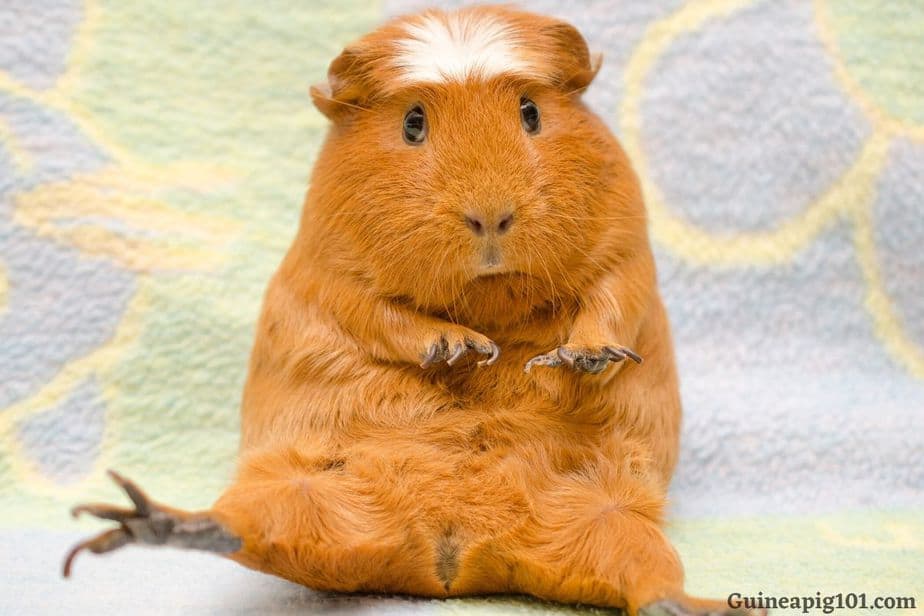
A broken leg of a guinea pig can be less or more problematic than the leg’s dislocation. The cleanliness and the area of the break play a role in deciding that.
Being prey animals, guinea pigs are very much talented at hiding their pain. You have to observe your guinea pig’s movement very carefully to detect their pain.
If your guinea pig is not giving weight to their back leg while walking, get your guinea pig to the vet for X-rays.
Treatment for this cause will include a brace or pins. This treatment can be expensive. You can make a homemade brace.
- Wrap the leg from the gauze or bleached cotton cloth of plain weave.
- Apply popsicle sticks or any splint. It will work as a brace.
- Make sure you don’t wrap the leg too tight as it can stop the blood flow.
Your guinea pig will need a proper rest for weeks after this. While they rest in their cage, you can offer them some willow bark.
That will work as a painkiller as well as a distraction for your guinea pig.
My guinea pig hind leg shaking
Guinea pig’s hind leg shaking can be a reaction to overheating, or it can also be a sign of impending paralysis.
In case of overheating, you can take such measures to overcome that.
- Remove your guinea pig from the heat source. Avoid direct sunlight and take them to a cool location.
- Don’t douche your guinea pig in cold water. That can get your guinea pig in shock.
- Mist their ears. Their ear helps them in heat exchange that cools down their body.
- Provide your guinea pig cold water.
- Comb your guinea pig to remove the extra fur.
- Place your guinea pig in cool tiles if you have it on your home.
Red ears, out of breath, lethargy, drooling, confusion in the movement are signs of overheating.
If your guinea pig is not overheated, then the reason for a shaky leg could be a warning sign of impending paralysis. The weakening of the guinea pig’s back leg could be a gradual process.
My guinea pig back leg not moving
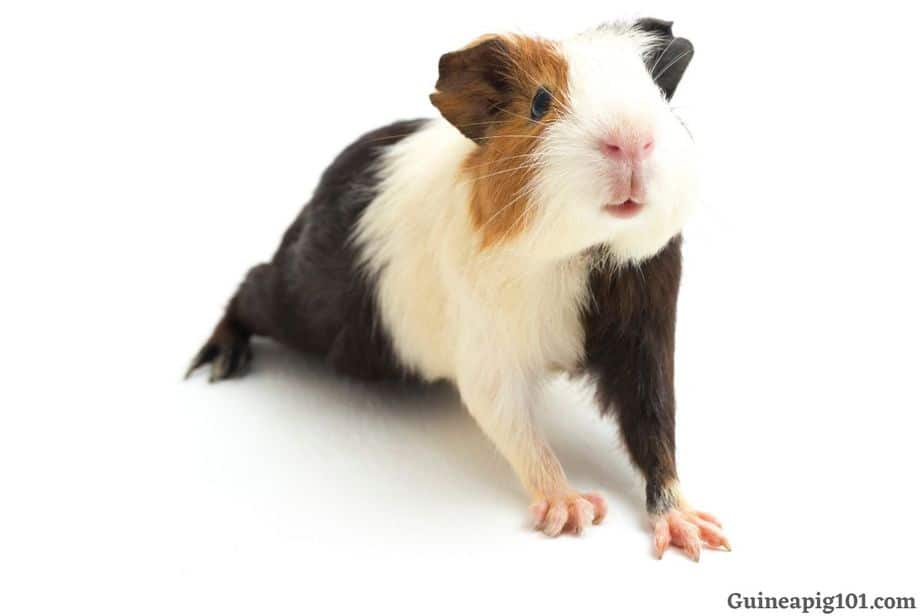
If the back leg of your guinea pig is not moving, then there can be a lot of factors behind the same. Some of the common causes include:
- Regular wear and tear of muscles and bones
- Fracture or dislocation
- Toxicity leading to severe health problems
This problem arises with the increase in the age of guinea pigs. That is common in older guinea pigs.
During their life, guinea pigs go through a notable amount of wear and tear by which their muscles start to weaken. And at a point, it starts to give away.
Fracture or some other disease can also be a reason for such a problem.
The owner should make sure that their guinea pig is not going through any fracture or dislocation.
Getting your guinea pig to the vet will help you determine the cause by performing X-rays of your guinea pig.
Performing a blood test of your guinea pig can also let you know if there is any disease of toxicity.
What causes hind leg paralysis in guinea pigs?
Physical injury can be a reason for the hind leg paralysis in guinea pigs. Some of the other reasons for hind leg paralysis are:
- Stroke: A stroke can lead to muscle paralysis in guinea pigs. Stroke is a likelier cause of partial paralysis in guinea pigs.
- Cancer: When cancer shifts to the spine, it compresses the spinal cord. In this case, paralysis can be there.
- Intervertebral disc disease (IVD): This disease stops your guinea pig from using their hind legs. It separates one or more discs from the spine. The intervertebral disc of your guinea pig is likely to swell. It causes pain in the back or neck.
- Ingestion of toxins: Guinea pigs are not able to vomit in case they inhale any toxic substance. Lack of energy and enthusiasm, breathing fast, paralysis is a symptom of toxicity.
- Spinal spondylosis: In such a case, your guinea pig may face a problem with their spine. In this, the bone spur restricts the movement of the spine.
Your guinea pig will need the help of a professional vet in case of paralysis for better treatment.
Also, for knowing the exact reason for paralysis, an expert is required.
You can’t solve such issues at home as these problems are checked with the help of different kinds of machines which you can’t arrange in your home.
How is hind leg paralysis in guinea pigs treated?

Such issues are treated with anti-inflammatory medicines that treat swelling and redness and painkillers for getting relief from the pain.
Proper rest and patience are also crucial in such cases. With time your guinea pig will recover when the swelling gets reduced.
The toxins can create a problem. Guinea pigs cannot excrete toxins by vomiting as they lack the stomach muscle strength to do so. Thus, a professional vet might need to use intravenous fluids to flush the toxins out.
There is not a particular treatment for strokes. It depends on how severely your guinea pig has been impacted. Euthanasia may be considered if the quality of life is compromised.
By removing the tumor, cancer will be tackled. Chemotherapy or radiotherapy is necessary as a follow-up to curve the spread. Amputation may be required if there is a possibility of disease spreading.
Also read: Can Guinea Pigs Vomit? Why Guinea Pigs Can’t Throw Up!
My guinea pig is dragging their back leg
Encephalitozoon cuniculi will mostly be a reason for your guinea pig dragging their back leg. Encephalitozoon is a parasite that affects your guinea pig spine, brain, or kidneys.
That will affect the guinea pig’s back legs by they will become unstable. It will be stressful for your guinea pig to use their back leg. As a result, they will drag their back legs as they will not be able to carry weight. Full paralysis can also occur in such a case.
Encephalitozoon cuniculi or E cuniculi can last for more than a year. The ingestion of spores causes it. Spore gets spread in the blood to the brain and other sites. It gets shed in the urine and serves as a source of infection.
This disease is difficult to detect. Some symptoms of encephalitozoon cuniculi include:
- Lack of voluntary control over urination.
- Eye discharge.
- Head tilting and spasms of neck.
If your guinea pig is suffering from such a problem, then always make sure that you wear gloves while picking them or touching them by any means.
This parasite can also be transferred to humans and can cause sickness to the individual with a weak immune system.
A blood test can make the identification of Encephalitozoon cuniculi.
Steroids can kill it in case if this parasite is detected. Take professional vet advice regarding the same. The owner should clean their guinea pig cage regularly, as disinfectant kills the parasite surviving in the guinea pig’s urine.
Another major cause behind back leg dragging in guinea pigs could be a lack of calcium in their diet.
Yes, a high calcium diet is bad for our guinea pigs, but the same applies to a very low calcium diet as well. It is important to balance the nutrients needed to prevent such problems in our guinea pigs.
My guinea pig is limping

Limping of your guinea pig shows you the symptoms of your guinea pig having a fracture. They usually limp when they are not able to carry their weight.
In such a case, first look at your guinea pig’s hock. Hock is the part of a hind leg that rests on the ground. Your guinea pig has a bacterial infection if their hock has been reddened, inflamed, or covered with sores.
Bumblefoot is also known as plantar pododermatitis. The introduction of staphylococcus bacteria causes it. It can be found on the toes and hock of your guinea pig. This condition covers four grades:
- Grade 1 – Grade 1 is the light condition. In this guinea pig will go through some unnoticeable hair loss.
- Grade 2 – In grade 2 there will be noticeable changes as with hair loss, their feet will get red and swollen.
- Grade 3 – This grade will come with pain. Your guinea pig will suffer torment in grade 3. There will also be a risk of getting infected as your guinea pig feet skin will start to break open.
- Grade 4 – In this stage, the infection will be rapidly spreading as the ulcer will form. Immediate treatment is needed in this grade.
- Grade 5 – This grade will be very painful for your guinea pig. Your guinea pig will not be able to walk at all. Also, the swelling will get troublesome.
You should take care of some factors if your guinea pig is suffering from a bumblefoot.
- Make sure that their cage is clean.
- Provide your guinea pigs a soft floor. Fleece bedding can help with that.
- Use the antibacterial soap for washing their feet.
- It would be best if you used a bandage or use some cloth to cover your guinea pig feet.
If bumblefoot continues, get your guinea pig to the vet. For getting relief from the pain, your guinea pig will also need a painkiller.
My guinea pig can’t stand up
The most common reason for your guinea pig not being able to stand up can be obesity.
Illness or other injuries can also be the reason they are overweight as their hind legs cannot take their weight. Hence your guinea pig struggles to stand up.
Before coming to any decision and getting panic, first confirm that your guinea pig is not overweight.
As every breed has a nearly identical weight (anywhere between 1000-1200 grams), you can find out if your guinea pig is overweight.
If you can feel their ribs, bottoms are plain, and their pelvis is round rather than being sharp. Then your guinea pig has a healthy weight, and if not, then overweight can be the reason for such an issue. You can also weigh a guinea pig for the same.

You can help your guinea pig get back to average weight.
Provide your guinea pig a healthy low-fat diet. Avoid offering treats to your guinea pig. Feed them high-quality grass hay. These steps can help your guinea pig not get overweight.
It will take time to get back to normal, but slowly, your guinea pig will stand up, overcome lethargy, and feel better. Having proper exercise should also be a concern.
Does Arthritis impact a guinea pig’s back legs?
Arthritis is prevalent in guinea pig’s life. It is widespread in older guinea pigs. Two types of arthritis impact guinea pig’s back legs.
- Osteoarthritis: Old age and obesity are the two reasons for this cause.
- Septic Arthritis: When a guinea pig goes through the injury, the infection gets into the wound site, which causes arthritis.
Any of these conditions will make it difficult for your guinea pig to use their hind legs. Your guinea pig will struggle to stand, walk, and exercise.
The owner has to make sure that their guinea pig doesn’t get sluggish. Getting sluggish will worsen the condition of arthritis.
There is no cure for arthritis except for giving massage and supplements for relief from pain.
You can stop the condition from getting worse. Offer your guinea pig a healthy low-fat diet by which they don’t get obese. Heavyweight can be painful in such cases.
Will a massage help my guinea pigs hind legs?
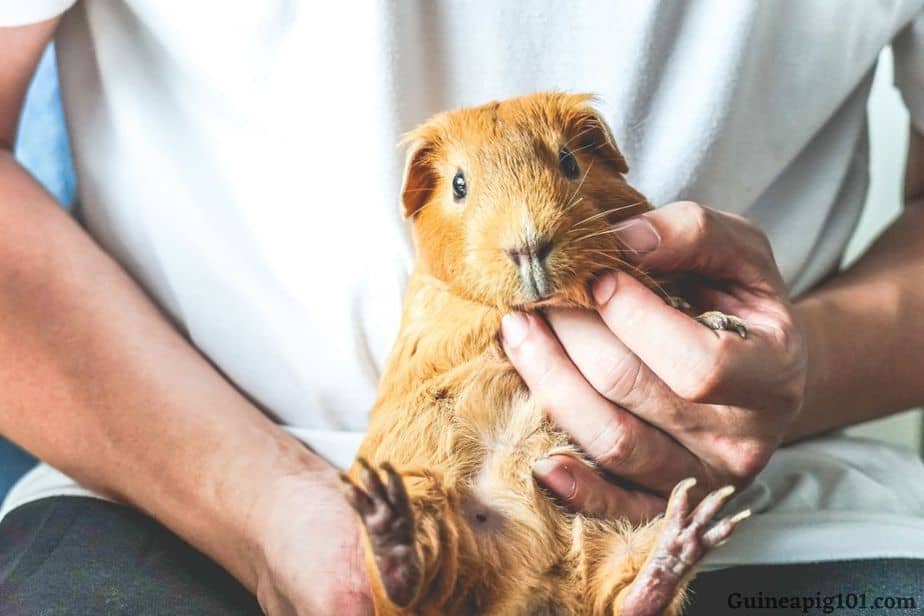
A massage can benefit your guinea pig’s hind legs; you can help them by giving them a massage.
Except for getting it healed and feeling relaxed, your guinea pig will find it delightful. That will also help you to generate a secure connection with your guinea pig.
There are two types of massage for your guinea pig.
- Effleurage.
- Petrissage
Effleurage
- Let your guinea pig be in a relaxed position. Use a towel as a support in case your guinea pig struggles to get in a comfortable position.
- Wash your guinea pig feet gently, and with soft hands knead their toes.
- Get to your guinea pig face and gently stroke their cheeks and the top of their head.
- Stopping before the tailbone(end part of the spine) stroke down your guinea pig spine. Make sure that you don’t apply too much pressure.
- Apply the same trick on your guinea pig joints once you are done with their back. You can also apply short sharp burst of pressure to the muscles.
If your guinea pig is comfortable with effleurage, you can go forward to the next type of massage called petrissage.
Petrissage
A petrissage is an intense form of massage. It includes kneading.
Make sure that you don’t apply petrissage until your guinea pig is comfortable with effleurage. The process includes:
- The first step will be the same as effleurage.
- Increase the pressure in these areas, but don’t apply pressure on your guinea pig’s neck. They are very delicate. With an increase in pressure, start kneading also.
- For warming, your guinea pig performs effleurage. After that, start kneading their shoulders.
- Gently move down from the shoulders to the hind. Continue kneading, but don’t apply pressure. Kneading your guinea pig bottom of the spine can spook your guinea pig. So make sure you don’t knead their base of the spine.
- After that, get to the legs. Knead your guinea pig all around the joints except thighs as it can be painful for them.
- For making them calm at last finish off with effleurage.
That is not the proper solution for getting completely revived from this problem.
But it gives your guinea pig relief and also reduces the possibilities of paralysis through wear and tear.
Your guinea pig will also find it delightful and will enjoy it.
Will my guinea pig need their hind leg amputated?
Sometimes amputation is the only option for guinea pigs after examining the paralyzed guinea pigs. This decision can’t be taken lightly. The most common reason for amputation is leg fractures.
Amputation is not necessitated for leg fractures, only for those guinea pigs who cannot heal independently.
The owner needs to take some action if the bones are not able to heal by themselves. Otherwise, it will create serious issues for them if the owner ignores this.
Amputation in the leg may be needed in case of a spread of disease. It should be cut off so that the infection shouldn’t spread all over the body. The likeliest example for the same would be cancer and tumors.
Amputation is condoned for most of the guinea pigs. Most of the guinea pigs recover very quickly and will never need an amputation.
Can guinea pigs live with three legs?
There are lots of guinea pigs who are just fine with their missing legs. But they struggle a lot to be balanced initially. However, they will eventually master the balance.
Also, it is essential to help your guinea pig clean themselves as guinea pigs may struggle with their grooming. Ears and bottom could be a major concern for a guinea pig with three legs.
The guinea pig owner needs to make sure that their guinea pig should always stays fit and healthy. The heavy body weight can increase the burden on their three legs, making it difficult for them to manage.
Guinea pigs can survive merrily and contentedly with their three legs.
It’ll take some time to get managed with this. Guinea pigs can play, run, and stand with their missing leg.
It is severe but common to have three legs of your guinea pig. They can cope very well, but the owner needs to ensure that they don’t get infected or sore; you need to be vigilant with their stump.
Conclusion:
From all the information above, we learned that back leg problems in the guinea pig are widespread.
Their hind legs get weak as they get older and older.
Also, illness and physical injury or some other trauma can lead to this kind of issue. It can also lead to paralysis if not treated well.
The common reason for leg weakness is joint problems.
There is something about which the owner should be concerned.
- Make sure that your guinea pig leg is not fractured.
- There can be a risk of bacteria on your guinea pig legs or feet. Thus, a test for the same must be done.
- Be assured that your guinea pig is not overheating.
- Get your guinea pig to the vet for medical concerns such as stroke or cancer.
Going from such issues will make it difficult for your guinea pig to groom their back rear, and they will also suffer from pain.
An owner should take good care of such a case. Regularly groom your guinea pig and spend as much time as possible while your guinea pig has proper rest. You can also help your guinea pig by giving them a massage.
Sources: A PARALYTIC DISEASE OF GUINEA PIGS DUE TO THE
TUBERCLE BACILLUS, DISLOCATED HOCK JOINT IN A 4-MONTH-OLD GUINEA PIG, Guinea Pig Fracture, Guinea pig pododermatitis.
